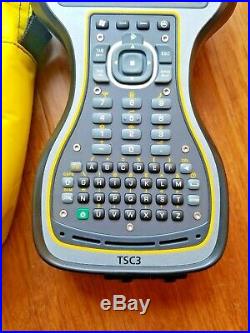Laser Surveying - For Surveyors, GPS Is otherwise engaged and Laser Scanning services Is In


Commercially released in the later 1990's, laser surveying-also known as laser beam scanning-has grown inside popularity until, nowadays, surveying companies that will wish to continue to be competitive must have a laser scanner, and often more than one. Although GPS surveying remains a standard service, its drawbacks when compared to laser surveying are causing a good industry wide change to the latter-a change that some surveyors have previously embraced.
One illustration of an inspector that successfully moved forward from GPS to laser scanning is LandAir Surveying, a Georgia based organization that started organization in 1988 carrying out topographic surveys plus site surveys intended for contractors in Georgia and surrounding areas. Like Click here to find out more that graduated to laser beam scanning, LandAir employed GPS into typically the early 2000's, whenever a specific job revealed the have to have for an products upgrade. For LandAir, that project was the Georgia Office of Transportation's requirement for an as-built conditions survey for a good eight lane passage, that has been too broad and long with regard to GPS devices in order to survey with accuracy and reliability.
After attending a laser scanning trial by a Leica Geosystems representative in 2005, LandAir bought the Leica 3 thousands, and today makes use of Leica's HDS6100, HDS6000, and ScanStation 2 scanners. Initially making use of its equipment intended for conventional projects, LandAir expanded to tasks whose size in addition to complexity necessitate lazer scanners, such as-builts of large interiors and structural help surveys, when firms with such jobs came knocking upon its door. The values that LandAir's early scanning customers saw in laser surveying are typically the same value of which it holds today:
The ability to be able to survey a larger variety of things, environments and structures
The ability to be able to complete a surveying project in while little as a single surveying session
The collection of more precise data than GPS NAVIGATION or total channels
The delivery of editable data models that clients may manipulate, thus decreasing surveyor involvement.
While LandAir discovered inside 2005, surveyors that switch from classic surveying to lazer surveying do considerably more than swap gear; they also modification how they conduct the surveying process. Whenever switching from GPS UNIT, field notes turn into a thing involving the past, substituted by endless data points and photo taking files; a conventional line of site to be able to the next surveying point is abandoned for more concentrated coverage; and laserlight scans often capture more data compared to a client at first needs but sooner or later finds useful, which decreases surveyor participation. From a consumer perspective, the laser surveyor's decreased participation has two advantages: it allows customers more freedom while facilitated by editable project data, also it drives down typically the surveying cost inspite of scanning equipment's better price than GPS UNIT equipment.
Regardless of project type, their lower surveying expense and superior free incentives are making lazer scanning the new surveying standard with companies where this isn't already. Organizations like LandAir have got stayed prior to the sport by embracing laser surveying early, the move that balances for LandAir's scanning services experience in numerous fields and industries, including law enforcement, preservation, architecture, construction, engineering, and telecommunications.
